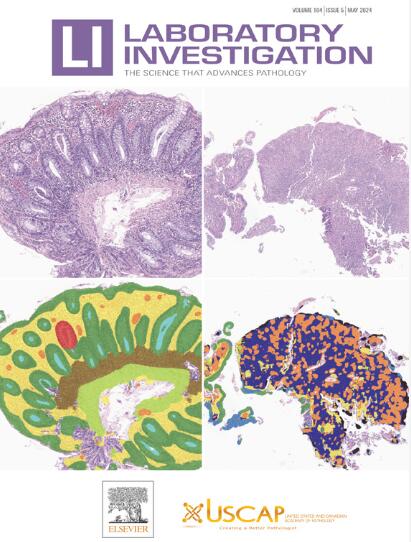荧光原位杂交、新一代测序和DNA甲基化微阵列用于胶质瘤拷贝数变异评估的比较
IF 5.1
2区 医学
Q1 MEDICINE, RESEARCH & EXPERIMENTAL
引用次数: 0
摘要
基因水平和染色体拷贝数变异(CNV)评估在胶质瘤的综合诊断中至关重要。虽然荧光原位杂交(FISH)传统上用于CNV检测,但新一代测序(NGS)和DNA甲基化微阵列(DMM)等新兴技术可用于临床实践。然而,这3种检测方法的比较性能及其一致性仍不清楚。我们对104例胶质瘤患者进行了回顾性队列研究。我们系统地比较了FISH、NGS和DMM检测以下6个cnv相关的诊断或预后参数:表皮生长因子受体(EGFR)、细胞周期蛋白依赖性激酶抑制剂2A/B (CDKN2A/B)、1p、19q、7号染色体和10号染色体。3种方法对EGFR的评价均具有较高的一致性;然而,FISH在检测其他参数时与NGS/DMM的一致性相对较低。NGS与DMM在6个参数的评价上均表现出较强的一致性。值得注意的是,不一致的病例与高级别胶质瘤(3/4级;P & lt;.05)和高比例的基因组改变(P <;.01),表明不一致病例的高恶性和基因组不稳定性。本研究阐明了传统FISH与NGS/DMM在CNV评估中的差异和局限性。这些差异与高级别胶质瘤和基因组不稳定性有关。我们提出了一个关于方法的建议过程,强调了在准确的临床诊断中集成多平台分析的重要性。本文章由计算机程序翻译,如有差异,请以英文原文为准。
Comparison of Fluorescence In Situ Hybridization, Next-Generation Sequencing, and DNA Methylation Microarray for Copy Number Variation Assessment in Gliomas
Gene-level and chromosomal copy number variation (CNV) assessments are critical in the integrated diagnosis of gliomas. Whereas fluorescence in situ hybridization (FISH) has been traditionally employed for CNV detection, emerging technologies such as next-generation sequencing (NGS) and DNA methylation microarray (DMM) are available in clinical practice. Nevertheless, the comparative performance of these 3 assays and the concordance of them remain unclear. A retrospective cohort study comprising 104 patients diagnosed with gliomas was conducted at our hospital. We systematically compared FISH, NGS, and DMM for detecting the following 6 CNV-related diagnostic or prognostic parameters: epidermal growth factor receptor (EGFR), cyclin-dependent kinase inhibitor 2A/B (CDKN2A/B), 1p, 19q, chromosome 7, and chromosome 10. All the 3 methods showed high consistency in EGFR assessment; however, FISH demonstrated relatively low concordance with NGS/DMM in detecting other parameters. In contrast, NGS and DMM exhibited strong concordance in the assessment of all the 6 parameters. Notably, discordant cases were associated with high-grade gliomas (grade 3/4; P < .05) and a high fraction of genome altered (P < .01), indicating high malignancy and genomic instability of discordant cases. This study elucidated the discrepancies and limitations of conventional FISH compared with NGS/DMM in CNV assessments. The discrepancies were associated with high-grade gliomas and genomic instability. We propose a process with recommendations on methods, highlighting the importance of integrated multiplatform assays in accurate clinical diagnosis.
求助全文
通过发布文献求助,成功后即可免费获取论文全文。
去求助
来源期刊

Laboratory Investigation
医学-病理学
CiteScore
8.30
自引率
0.00%
发文量
125
审稿时长
2 months
期刊介绍:
Laboratory Investigation is an international journal owned by the United States and Canadian Academy of Pathology. Laboratory Investigation offers prompt publication of high-quality original research in all biomedical disciplines relating to the understanding of human disease and the application of new methods to the diagnosis of disease. Both human and experimental studies are welcome.
 求助内容:
求助内容: 应助结果提醒方式:
应助结果提醒方式:


